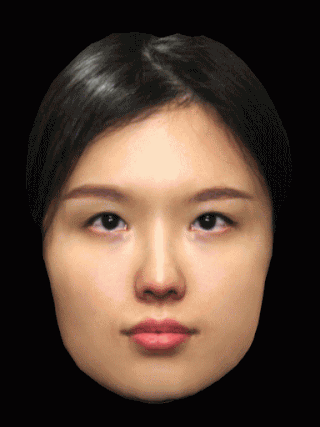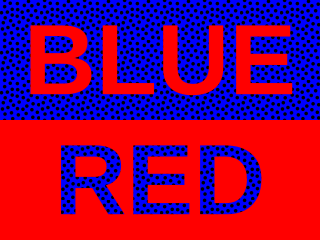
In visual perception, an optical illusion is an illusion caused by the visual system and characterized by a visual percept that arguably appears to differ from reality. Illusions come in a wide variety; their categorization is difficult because the underlying cause is often not clear but a classification proposed by Richard Gregory is useful as an orientation. According to that, there are three main classes: physical, physiological, and cognitive illusions, and in each class there are four kinds: Ambiguities, distortions, paradoxes, and fictions. A classical example for a physical distortion would be the apparent bending of a stick half immersed in water; an example for a physiological paradox is the motion aftereffect. An example for a physiological fiction is an afterimage. Three typical cognitive distortions are the Ponzo, Poggendorff, and Müller-Lyer illusion. Physical illusions are caused by the physical environment, e.g. by the optical properties of water. Physiological illusions arise in the eye or the visual pathway, e.g. from the effects of excessive stimulation of a specific receptor type. Cognitive visual illusions are the result of unconscious inferences and are perhaps those most widely known.

An impossible object is a type of optical illusion that consists of a two-dimensional figure which is instantly and naturally understood as representing a projection of a three-dimensional object but cannot exist as a solid object. Impossible objects are of interest to psychologists, mathematicians and artists without falling entirely into any one discipline.

The Necker cube is an optical illusion that was first published as a rhomboid in 1832 by Swiss crystallographer Louis Albert Necker. It is a simple wire-frame, two dimensional drawing of a cube with no visual cues as to its orientation, so it can be interpreted to have either the lower-left or the upper-right square as its front side.

The Müller-Lyer illusion is an optical illusion consisting of three stylized arrows. When viewers are asked to place a mark on the figure at the midpoint, they tend to place it more towards the "tail" end. The illusion was devised by Franz Carl Müller-Lyer (1857–1916), a German sociologist, in 1889.

Forced perspective is a technique that employs optical illusion to make an object appear farther away, closer, larger or smaller than it actually is. It manipulates human visual perception through the use of scaled objects and the correlation between them and the vantage point of the spectator or camera. It has uses in photography, filmmaking and architecture.

Depth perception is the ability to perceive distance to objects in the world using the visual system and visual perception. It is a major factor in perceiving the world in three dimensions

An autostereogram is a two-dimensional (2D) image that can create the optical illusion of a three-dimensional (3D) scene. Autostereograms use only one image to accomplish the effect while normal stereograms require two. The 3D scene in an autostereogram is often unrecognizable until it is viewed properly, unlike typical stereograms. Viewing any kind of stereogram properly may cause the viewer to experience vergence-accommodation conflict.

The Ternus illusion, also commonly referred to as the Ternus Effect, is an illusion related to human visual perception involving apparent motion. In a simplified explanation of one form of the illusion, two discs, are shown side by side as the first frame in a sequence of three frames. Next a blank frame is presented for a very short, variable duration. In the final frame, two similar discs are then shown in a shifted position. Depending on various factors including the time intervals between frames as well as spacing and layout, observers perceive either element motion, in which L appears to move to R while C remains stationary or they report experiencing group motion, in which L and C appear to move together to C and R. Both element motion and group motion can be observed in animated examples to the right in Figures 1 and 2.

The Moon illusion is an optical illusion which causes the Moon to appear larger near the horizon than it does higher up in the sky. It has been known since ancient times and recorded by various cultures. The explanation of this illusion is still debated.

Aerial perspective, or atmospheric perspective, refers to the effect the atmosphere has on the appearance of an object as viewed from a distance. As the distance between an object and a viewer increases, the contrast between the object and its background decreases, and the contrast of any markings or details within the object also decreases. The colours of the object also become less saturated and shift toward the background colour, which is usually bluish, but may be some other colour under certain conditions.

An Ames room is a distorted room that creates an optical illusion. Likely influenced by the writings of Hermann Helmholtz, it was invented by American scientist Adelbert Ames Jr. in 1946, and constructed in the following year.

The term composition means "putting together". It can be thought of as the organization of the elements of art according to the principles of art. Composition can apply to any work of art, from music through writing and into photography, that is arranged using conscious thought.

Visual angle is the angle a viewed object subtends at the eye, usually stated in degrees of arc. It also is called the object's angular size.

The Hollow-Face illusion is an optical illusion in which the perception of a concave mask of a face appears as a normal convex face.

The barberpole illusion is a visual illusion that reveals biases in the processing of visual motion in the human brain. This visual illusion occurs when a diagonally striped pole is rotated around its vertical axis (horizontally), it appears as though the stripes are moving in the direction of its vertical axis rather than around it.

The leaning tower illusion is a visual illusion seen in a pair of identical images of the Leaning Tower of Pisa photographed from below. Although the images are duplicates, one has the impression that the tower on the right leans more, as if photographed from a different angle. The illusion was discovered by Frederick Kingdom, Ali Yoonessi and Elena Gheorghiu at McGill University, and won first prize in the Best Illusion of the Year Contest 2007.

Chromostereopsis is a visual illusion whereby the impression of depth is conveyed in two-dimensional color images, usually of red–blue or red–green colors, but can also be perceived with red–grey or blue–grey images. Such illusions have been reported for over a century and have generally been attributed to some form of chromatic aberration.
In human visual perception, the visual angle, denoted θ, subtended by a viewed object sometimes looks larger or smaller than its actual value. One approach to this phenomenon posits a subjective correlate to the visual angle: the perceived visual angle or perceived angular size. An optical illusion where the physical and subjective angles differ is then called a visual angle illusion or angular size illusion.
Geometrical–optical are visual illusions, also optical illusions, in which the geometrical properties of what is seen differ from those of the corresponding objects in the visual field.
The ambient optic array is the structured arrangement of light with respect to a point of observation. American psychologist James J. Gibson posited the existence of the ambient optic array as a central part of his ecological approach to optics. For Gibson, perception is a bottom-up process, whereby the agent accesses information about the environment directly from invariant structures in the ambient optic array, rather than recovering it by means of complex cognitive processes. More controversially, Gibson claimed that agents can also directly pick-up the various affordances of the environment, or opportunities for the observer to act in the environment, from the ambient optic array.


















